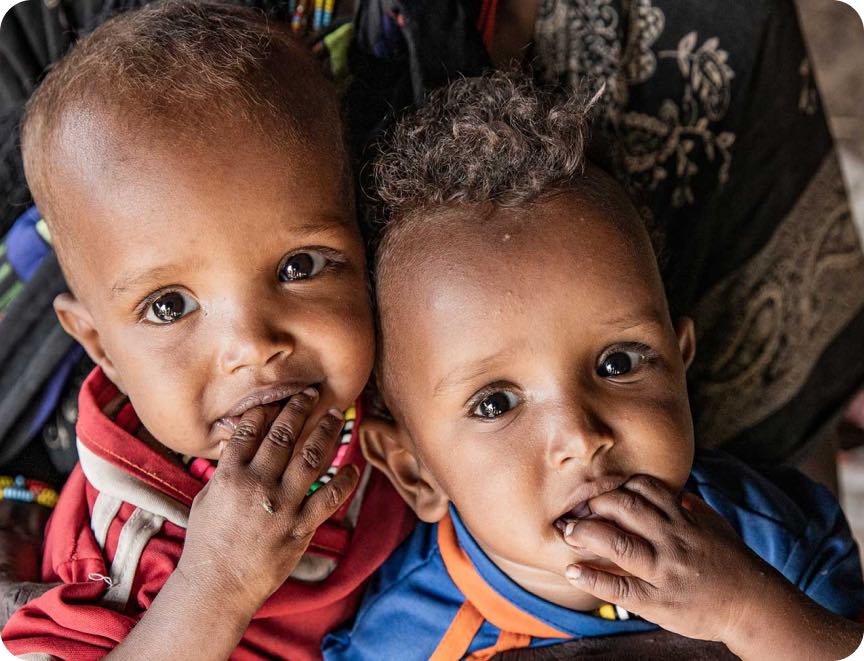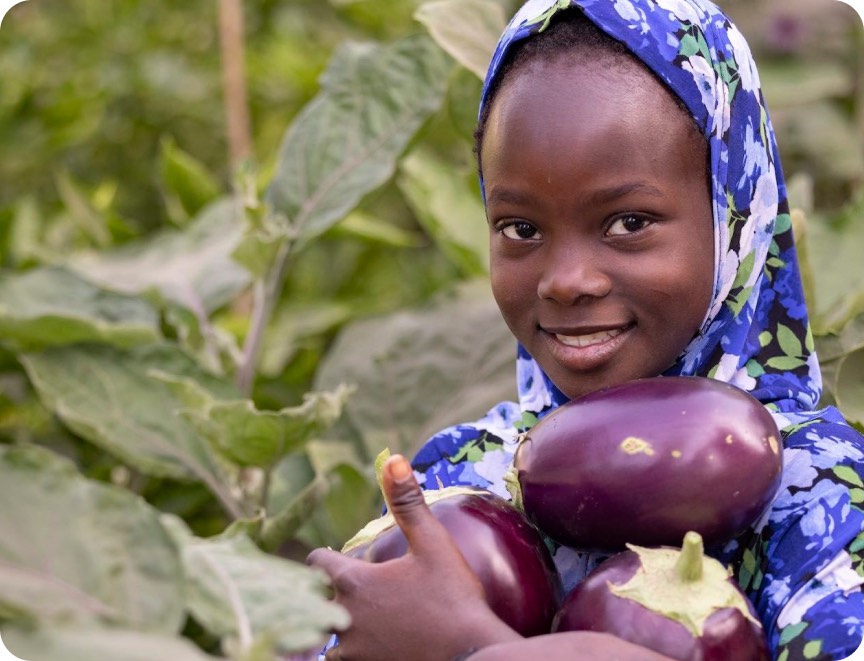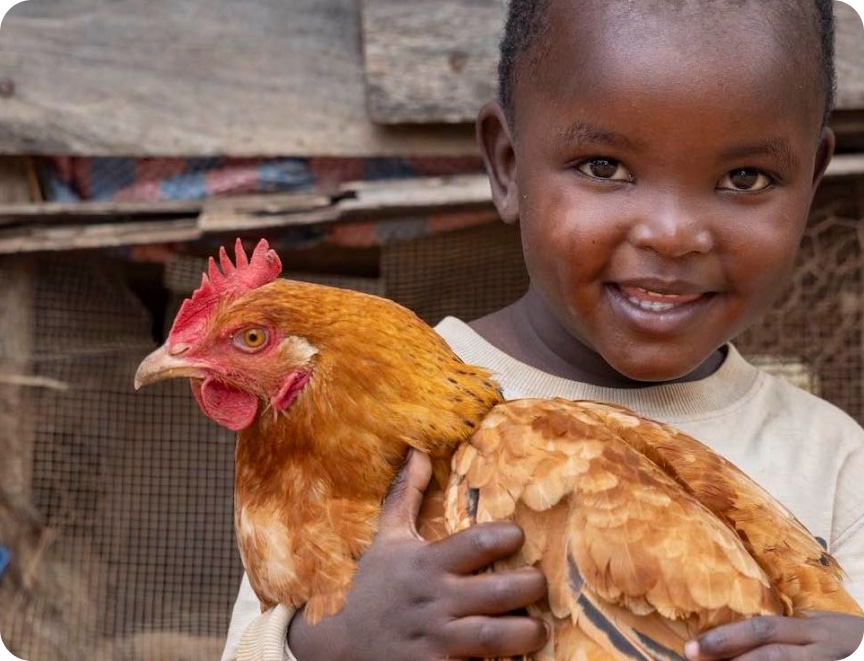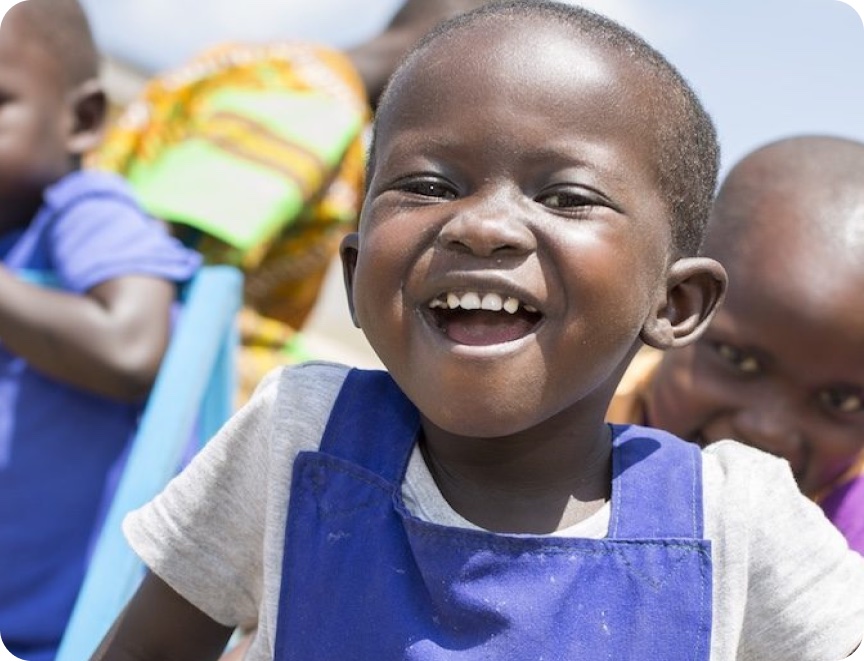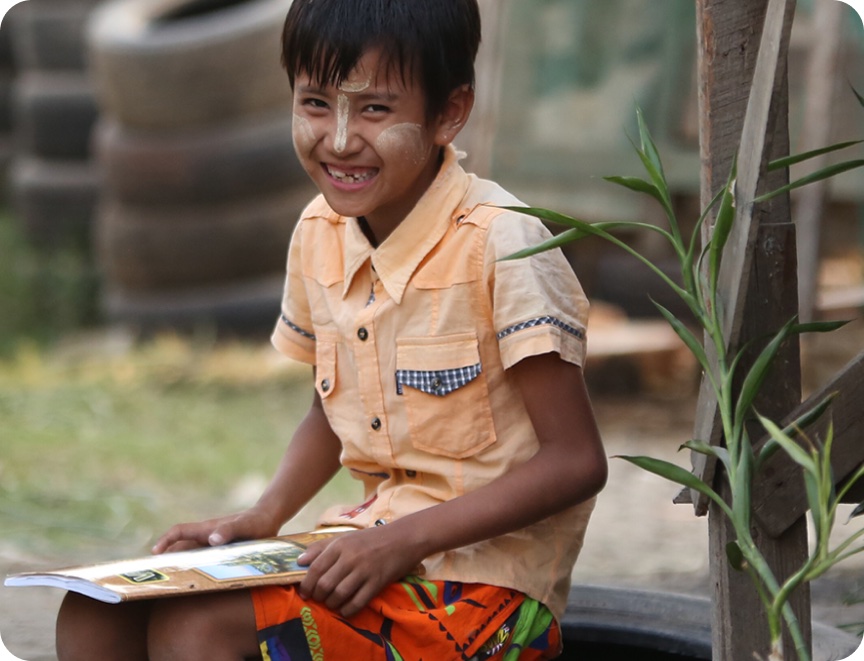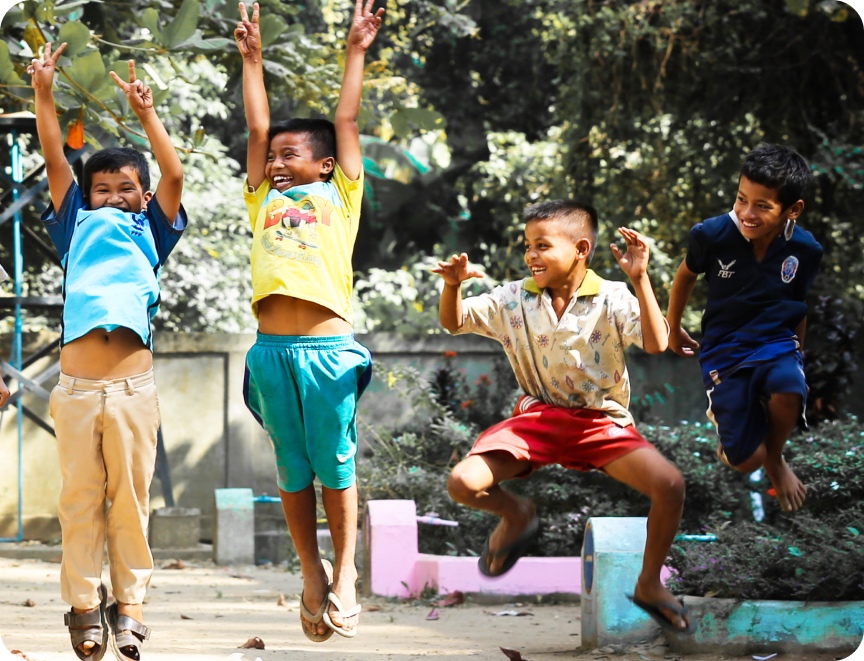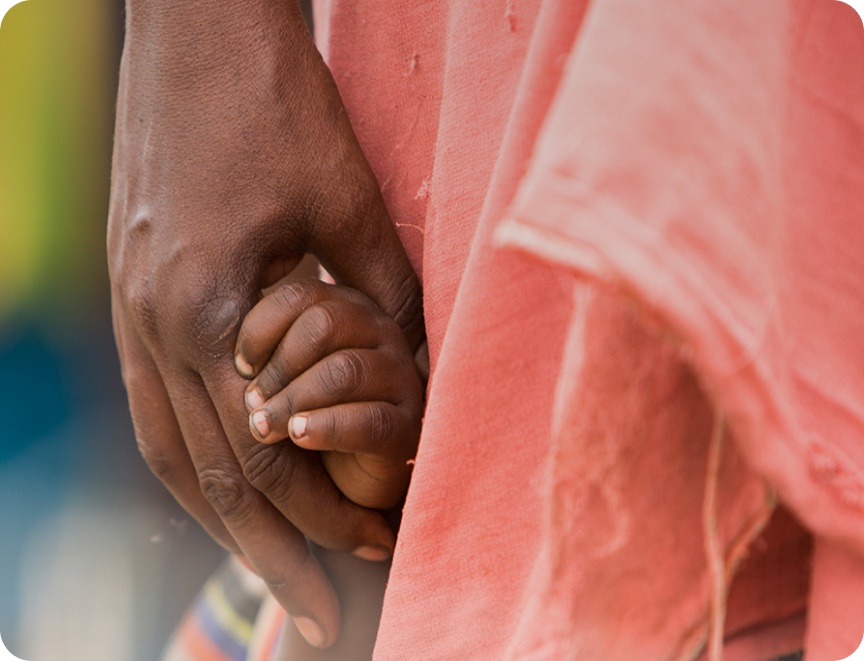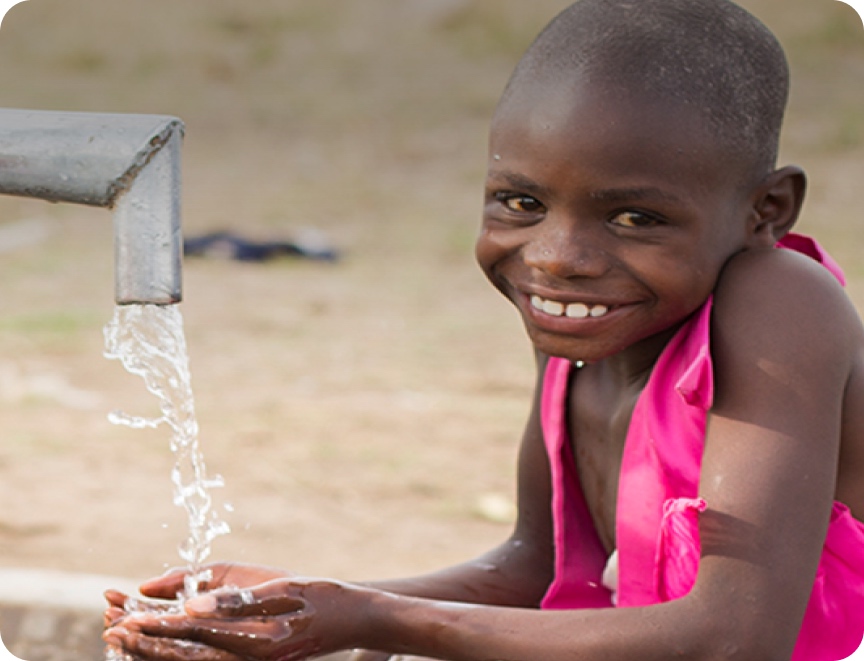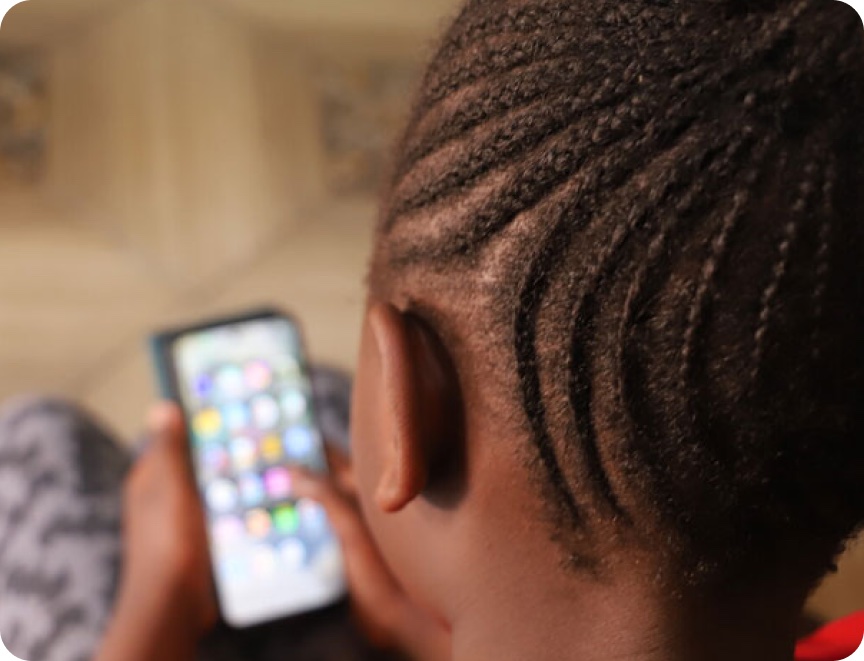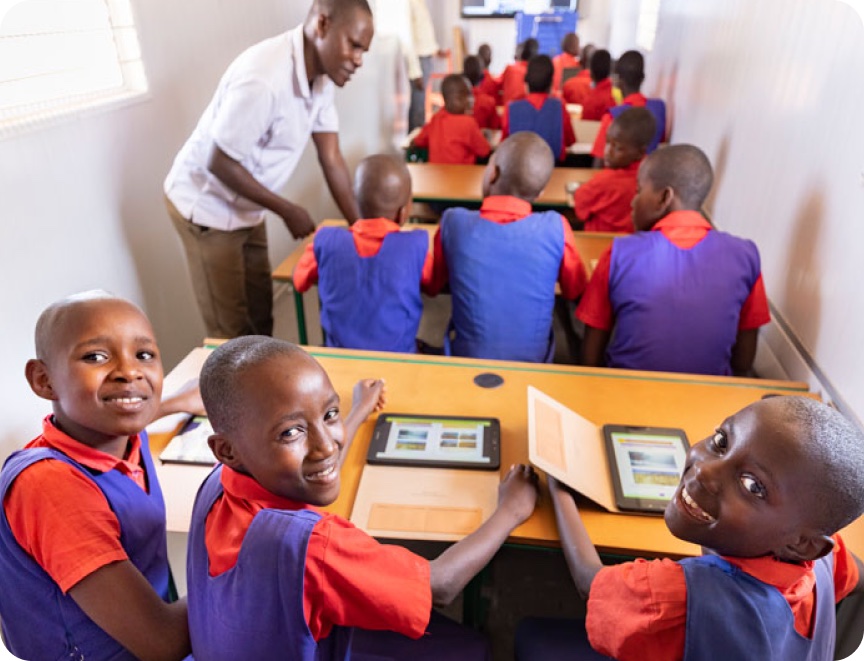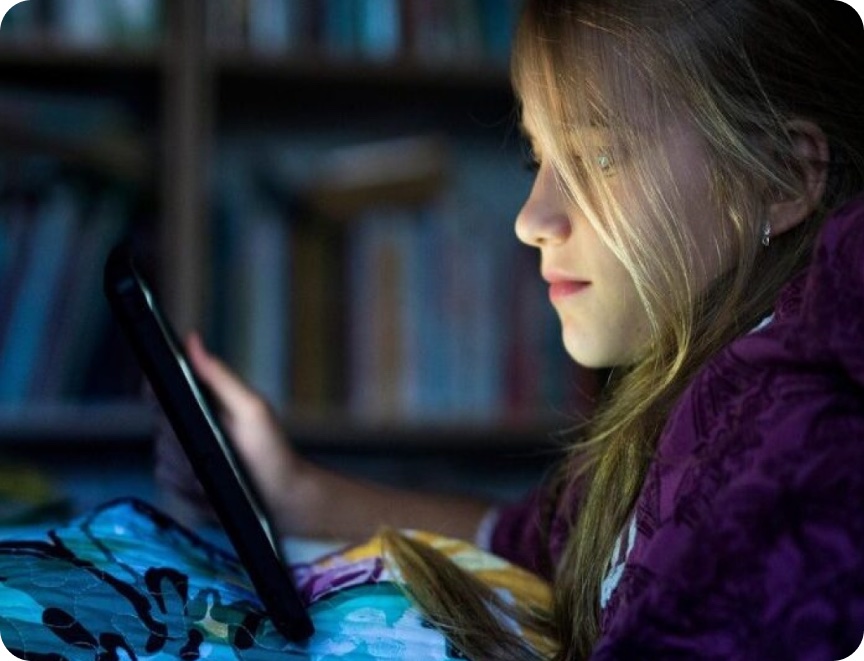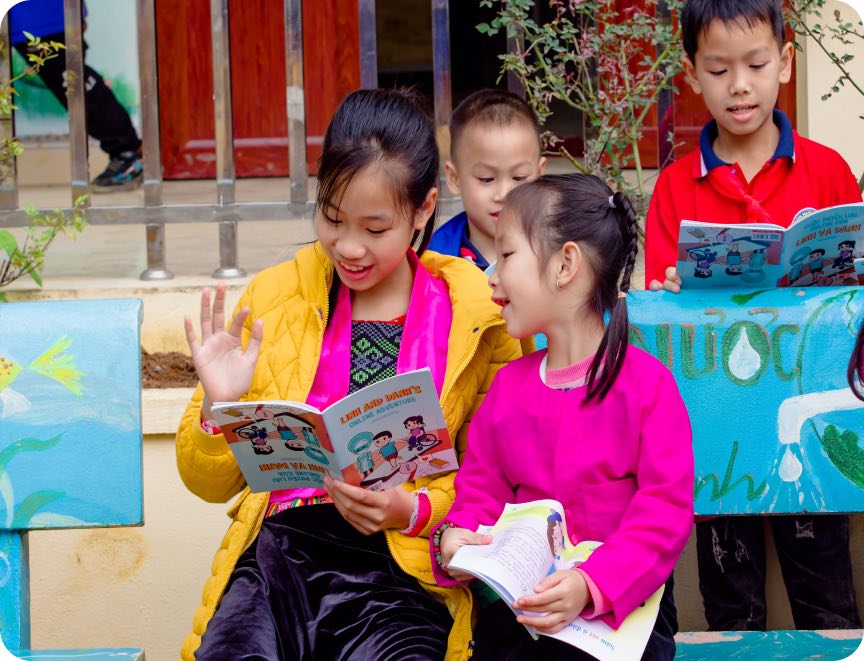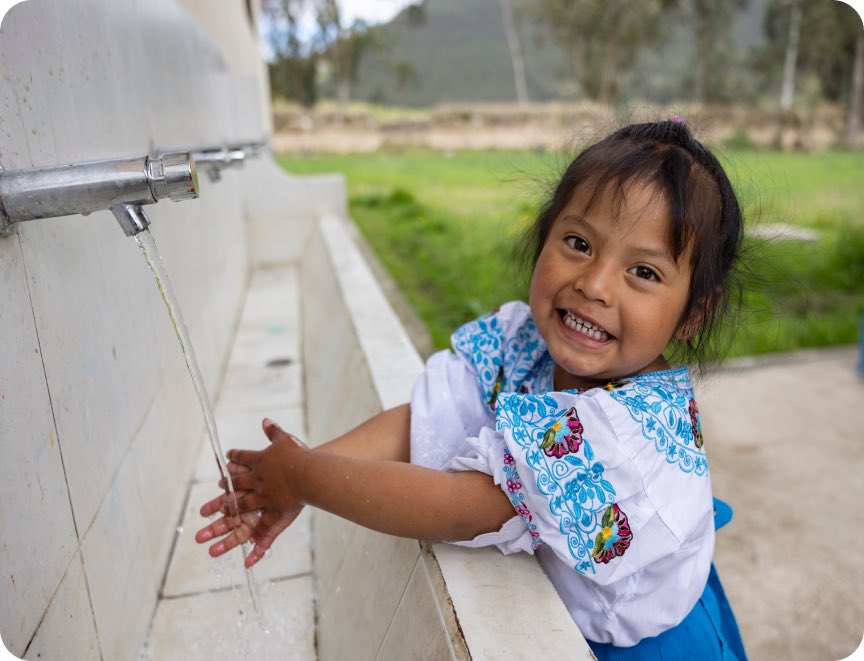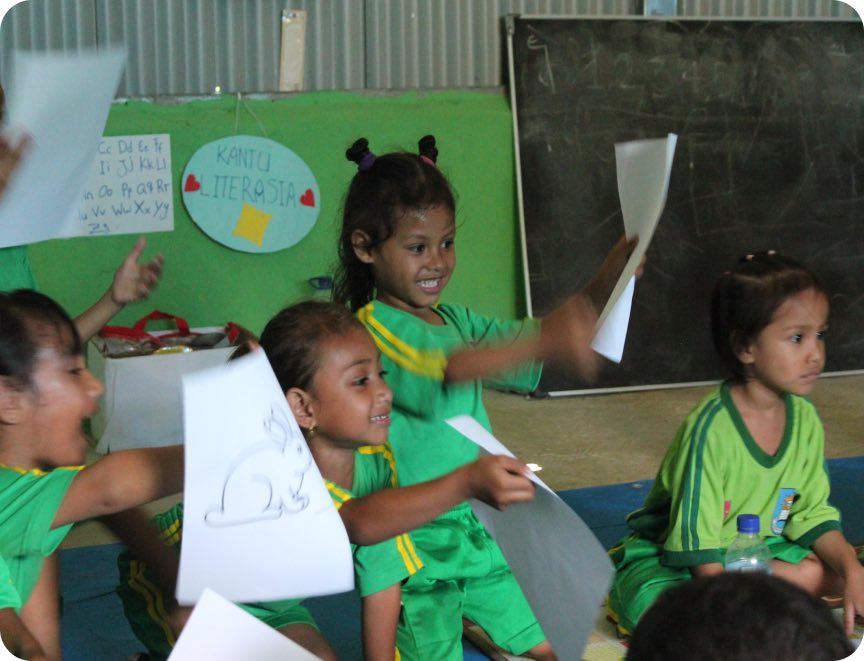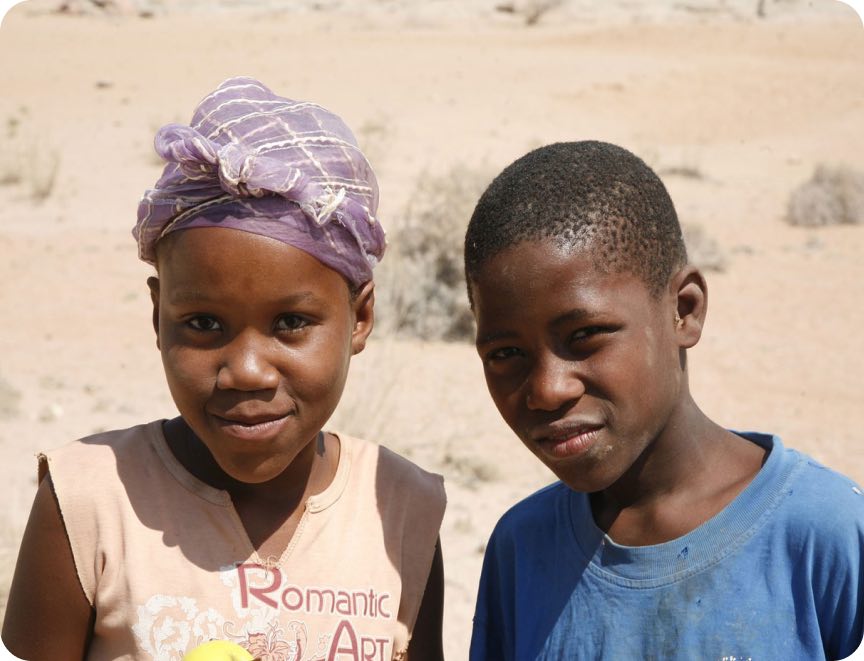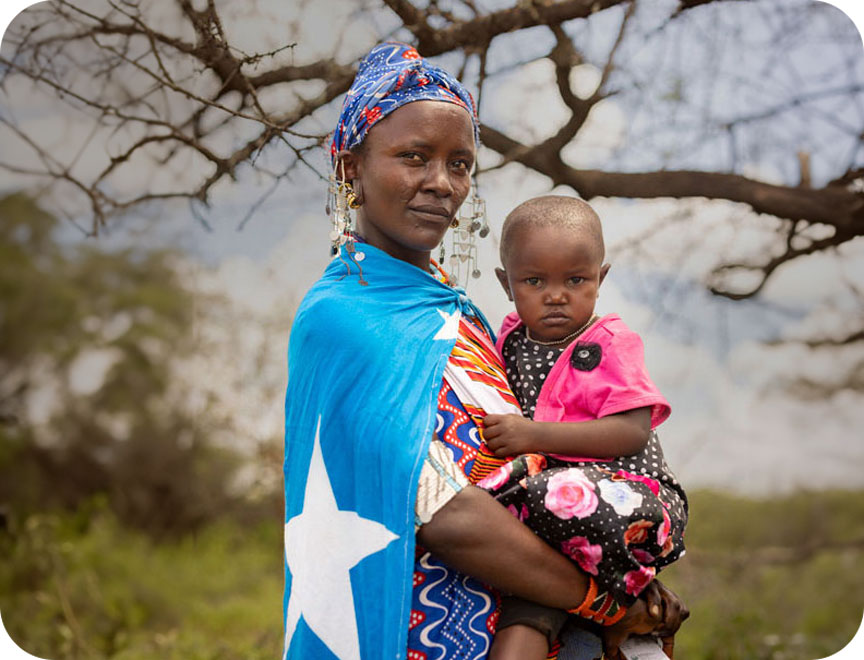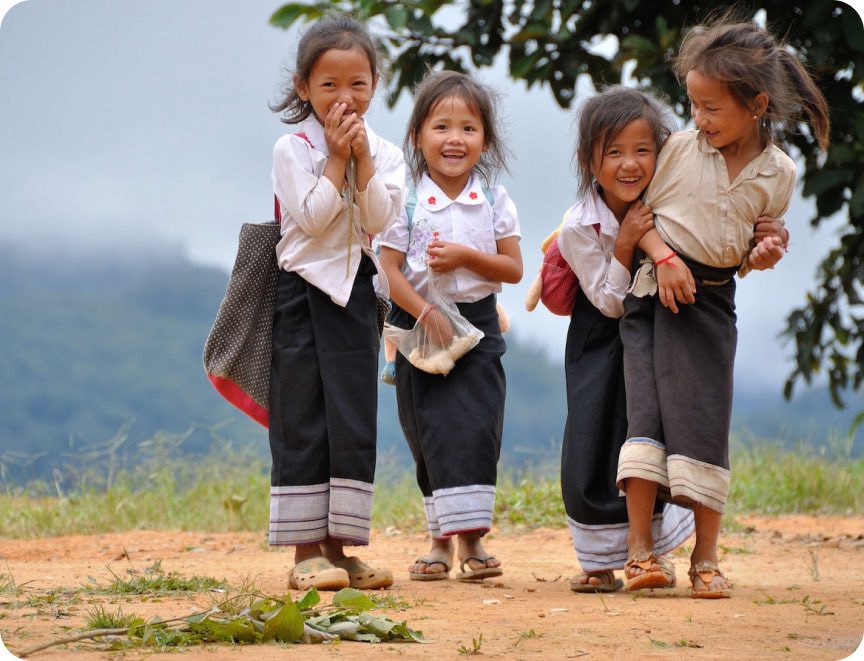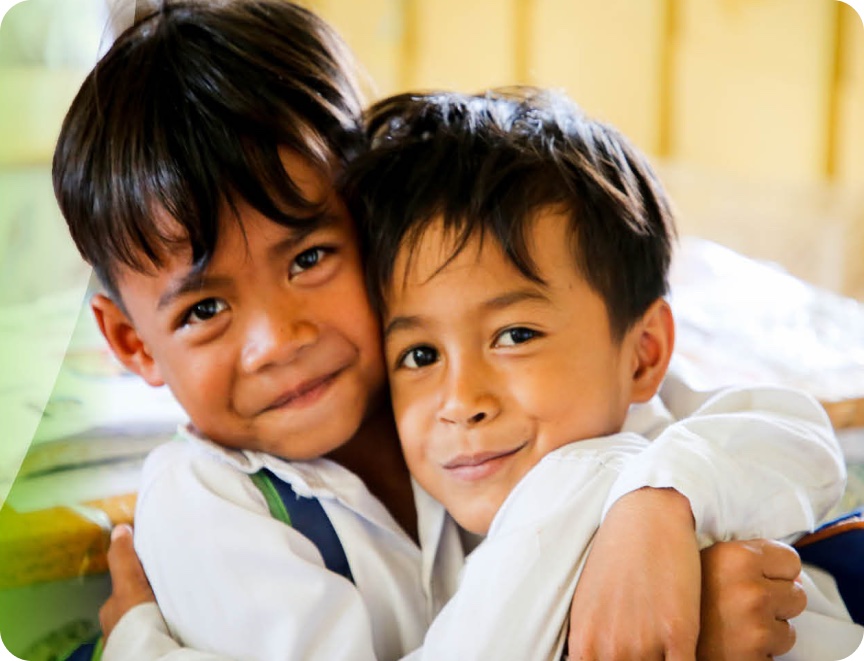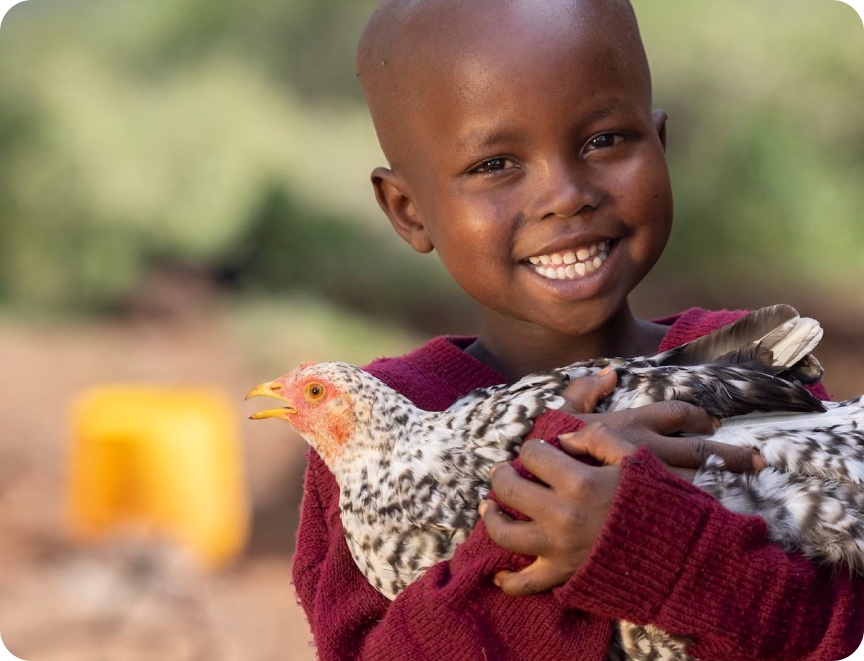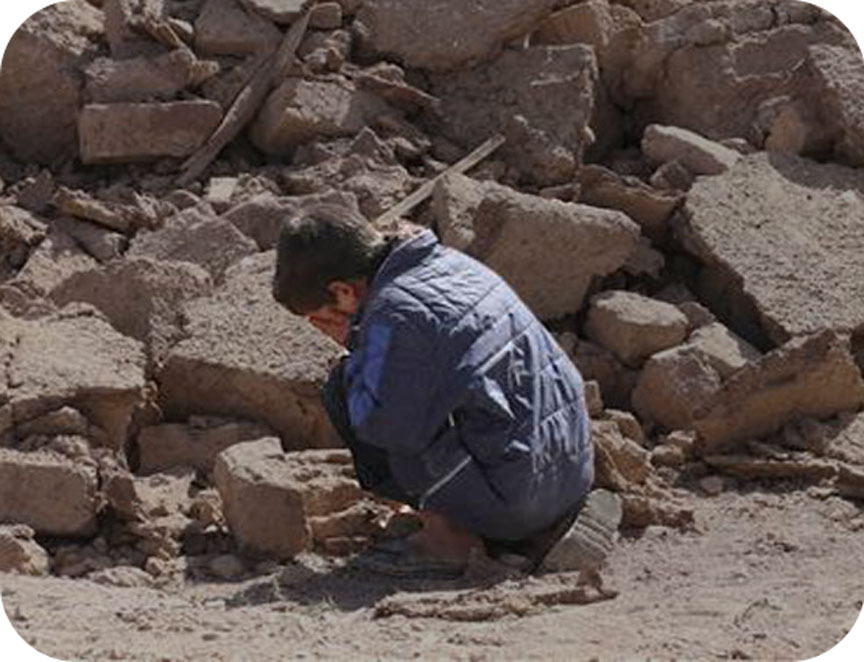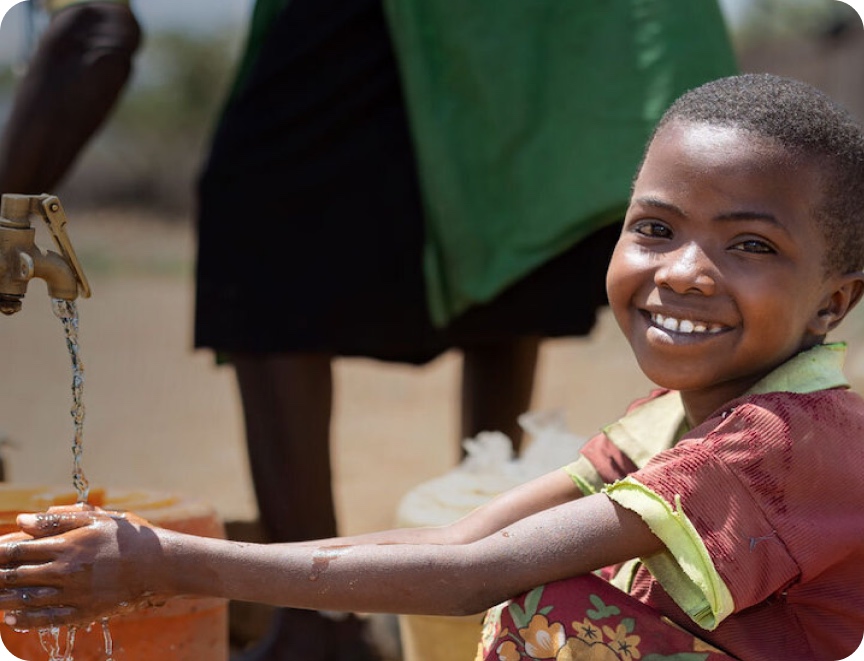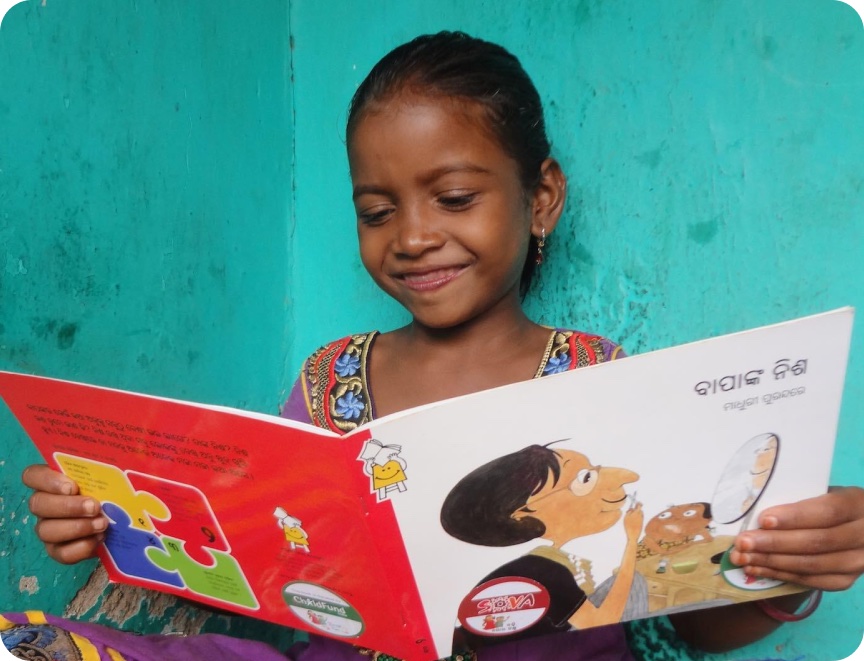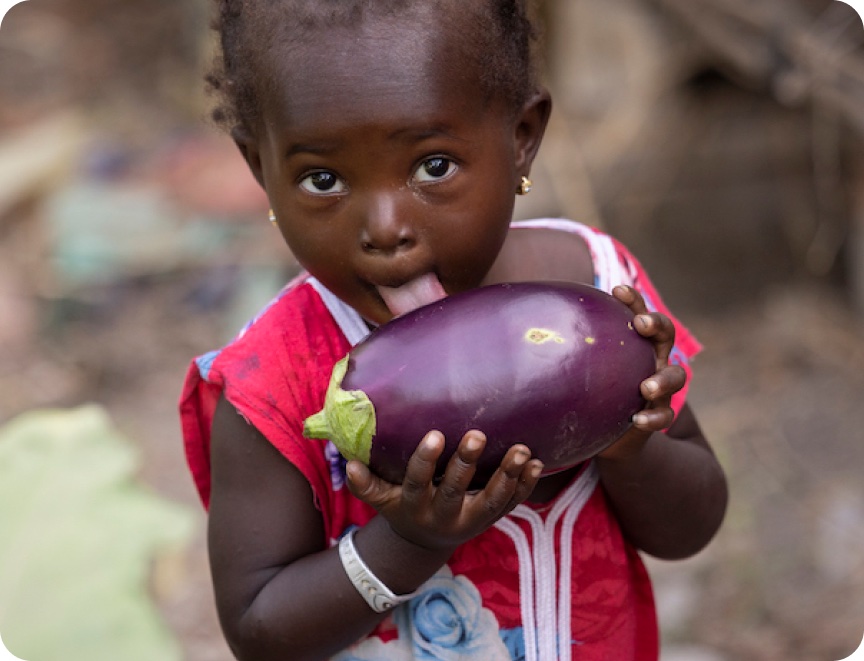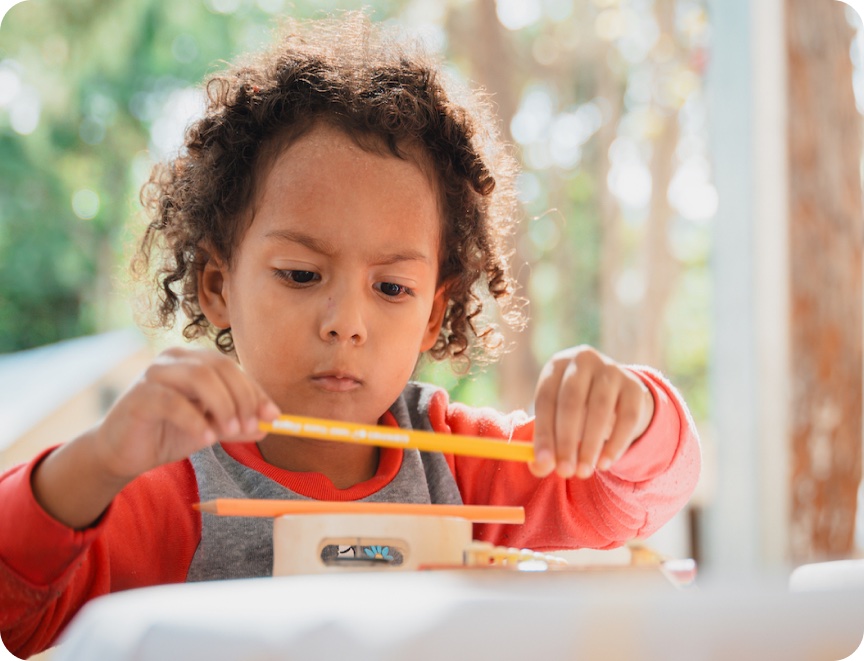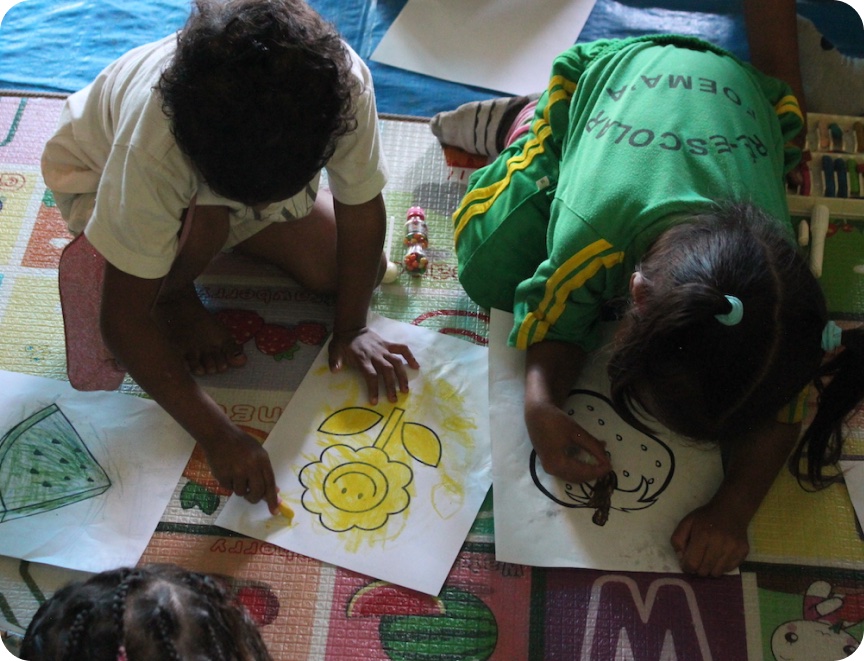Beyond the headlines, the story of natural disasters is one of human response. Learn how communities are preparing for, responding to and rebuilding after some of the world’s most recent natural disasters.
For millions of children and families around the world, the threat of natural disasters is very much a part of life. They don’t know when they’ll strike, or the impact they will have. The only way to live with this uncertainty, is to have a community based disaster response plan.
Concern over natural disasters is growing – and it’s easy to see why. Across the Asia-Pacific, storms, floods, heatwaves and droughts are no longer isolated events. One disaster follows another, leaving communities with barely enough time to rebuild before the next hits. Homes are washed away, schools are closed, crops fail, and families are forced to start over again and again.
In 2024, the Asia-Pacific region remained the most disaster-prone globally, with existing risk hotspots experiencing more frequent and intense disasters, and new hotspots emerging. The ESCAP Asia-Pacific Disaster Report 2024 highlights the urgent need for transformative adaptation measures, including stronger multi-hazard early warning systems and nature-based solutions, to protect people and safeguard development gains.
Climate change is fuelling this onslaught, making extreme weather more frequent and severe. For children and families already living in vulnerable conditions, the impacts are multiplied: disrupted education, lost livelihoods, and lasting psychological and economic scars. Each disaster is not just a single event – it’s a chain reaction that can reshape a community for years to come.
Children across the world are living with the impacts of natural disasters every day. Through their artwork and stories, they show us the urgent risks we can’t ignore. The recent earthquakes in Myanmar and Afghanistan highlight how devastating disasters are for children and families. ChildFund works with communities worldwide to strengthen disaster preparedness, response and recovery, helping families rebuild and protect their futures.
In this blog, we’ve outlined everything you need to know about:
- What natural disasters are
- Different types of natural disasters
- What happens in the aftermath of a disaster
- How communities can prepare
- How you can support
- FAQs
What is a natural disaster?
A natural disaster doesn’t begin as a disaster. It starts as a natural hazard – an event like an earthquake, flood or drought. It becomes a disaster when it causes severe harm to people, destroys homes and livelihoods, and overwhelms a community’s ability to cope.
Some disasters strike in an instant, like earthquakes or flash floods. Others build slowly, such as droughts that worsen over months or years. The causes of natural disasters vary and may come from geological activity, extreme weather, climate change or even biological factors. For example:
- Earthquakes result from tectonic plates shifting beneath the Earth’s surface
- Floods can follow heavy rain, storm surges or rapid snowmelt
- Droughts often occur hold after long periods without rain and can be made worse by human activities such as deforestation
The difference between a hazard and a disaster is important to understand. While hazards are inevitable, disasters don’t have to be. Children and families in vulnerable situations are often hit hardest – losing safe homes, education and security. By understanding the causes and impacts, we can prepare better, reduce risks and help communities recover and rebuild after disaster strikes.
What types of natural hazards can occur?
A natural disaster is defined as a naturally occurring phenomenon which is caused by either a rapid or slow onset of events. Natural disasters can be classified into five different types:
- Geophysical: earthquakes, landslides, tsunamis and volcanic eruptions
- Hydrological: floods and avalanches
- Climatological: drought, wildfires and extreme temperatures
- Meteorological: storms, wave surges, cyclones and typhoons
- Biological: insect and animal plagues.
Examples of when a natural hazard becomes a disaster examples include Typhoon Rai, which hit the Philippines in December 2021, and Myanmar’s recent devastating earthquake on March 28, 2025 which caused over 3700 deaths and many more injuries. ChildFund continues to provide humanitarian aid and disaster relief in Myanmar to support communities to recover and rebuild, and the recent earthquake in Afghanistan, which destroyed villages and cut off families in remote southeastern provinces.
What happens during the aftermath of a natural disaster?
After a natural disaster passes through a community, it leaves a path of destruction and devastation. It can take weeks, months, or even years for communities to recover and rebuild. The emotional toll on children and families can impact their lives forever.
In the immediate aftermath of the two powerful earthquakes in early 2015, ChildFund responded with emergency relief, providing food, shelter and child-centred spaces. Over the following two years, we supported communities to recover and rebuild, repairing schools, supplying essential learning materials, ensuring access to safe water and hygiene, and helping families re-establish livelihoods. Child protection and preparing for future emergencies remained central priorities throughout.
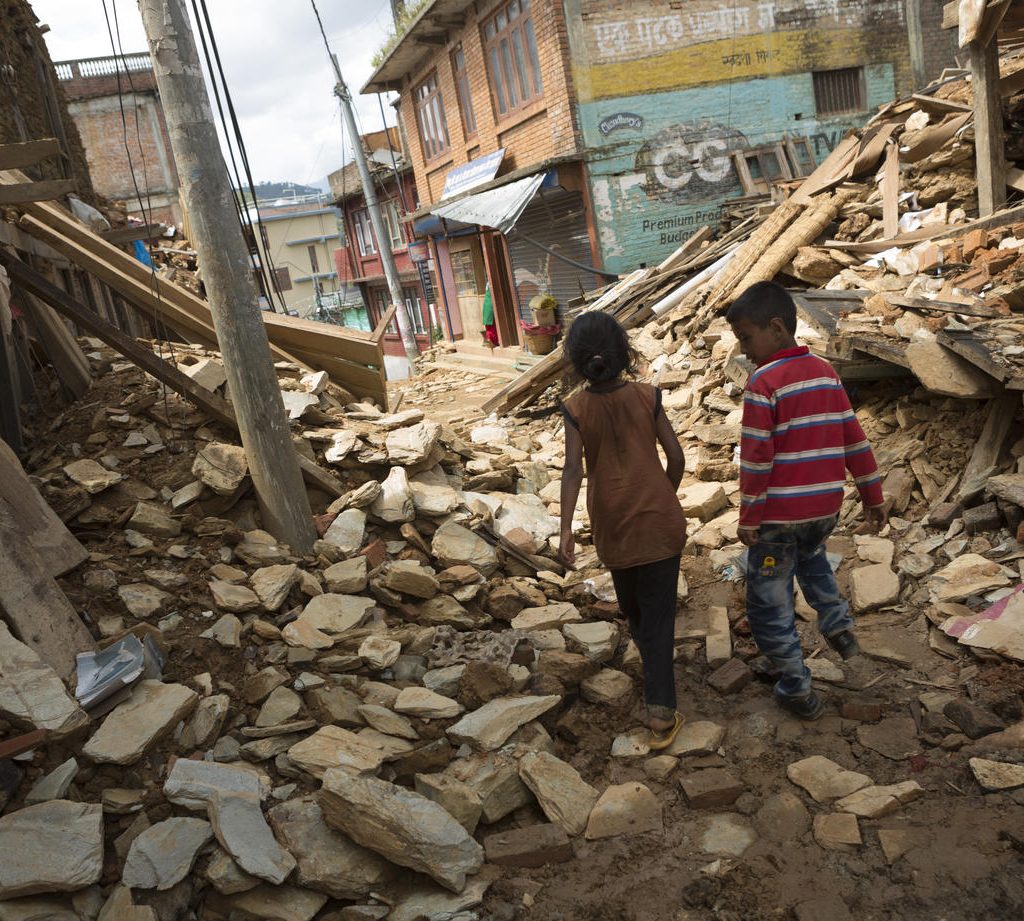
The earthquakes destroyed thousands of homes and damaged over 25,000 classrooms across Nepal, with another 10,000 left in need of repair. When schools reopened, nearly one million children were unable to resume their education and regain a sense of routine – a vital part of helping children recover from the trauma of disaster.
To address this, ChildFund prioritised the construction of Temporary Learning Spaces in the hardest-hit areas, enabling students to return to school within weeks. Built with locally sourced materials, the shelters provided secure, child-centred learning spaces and allowed children to continue their education while permanent reconstruction was underway.
ChildFund also worked in partnership with the Nepalese Government and local agencies to plan and coordinate long-term recovery, focusing on school reconstruction and renovation so that children could eventually return to safe, permanent learning environments
Communities as first responders
In the first 72 hours after a disaster, local communities often bear the heaviest burden. In remote villages, neighbours pull people from flooded homes, clear debris from roads and shelters, and comfort children who have lost everything – long before external aid arrives.
The need for local action is growing. In 2024, the Asia-Pacific remained the world’s most disaster-prone region, with hotspots experiencing more frequent and intense events. The ESCAP Asia-Pacific Disaster Report 2024 stresses the urgent need for early warning systems and nature-based solutions to protect people and safeguard development gains.
Disaster preparedness is vital everywhere. Communities around the world, from Cox’s Bazar to rural Australia, take practical steps to stay ready. Australian families follow Rural Fire Service bushfire survival plans – checking supplies, mapping escape routes and staying alert – so they can respond quickly when fire strikes. Being prepared doesn’t just protect property – it saves lives and strengthens resilience across communities.
How can communities prepare for a natural disaster?
No two natural disasters are the same, however they all require the same level of advance preparation. Here are several ways communities can be forewarned and forearmed to reduce risk:
Learn from the past
Whilst devastating, natural disasters offer an insight into how to better prevent and prepare for another emergency in the future. Reflecting upon what worked well and what needs addressing could offer invaluable intel for a community’s response plan. According to the New York Times, people respond more effectively in an emergency if the threat occurring has been addressed in the past.
Establish a community action plan
The aim of a community action plan is to ensure everyone in a local area is aware of potential natural disasters. The response plan should highlight the most common threats to the region, establish safe zones of evacuation, and provide guidance on what to include in survival and emergency kits. Clear communication channels should be outlined in the community action plan and be adhered to.
Pack an emergency kit
Having an emergency kit ready to go makes a world of difference to keep safe during and after a natural disaster. The most important things to have on hand after a natural disaster include clean drinking water, nonperishable food and a first aid kit.
Listen to experts
Whether it is news reports of dangerous weather approaching, or local officials advising evacuation, a key to surviving a natural disaster in the community is to listen to the advice of experts and follow their recommendations.
What is the role of children in community based disaster risk reduction?
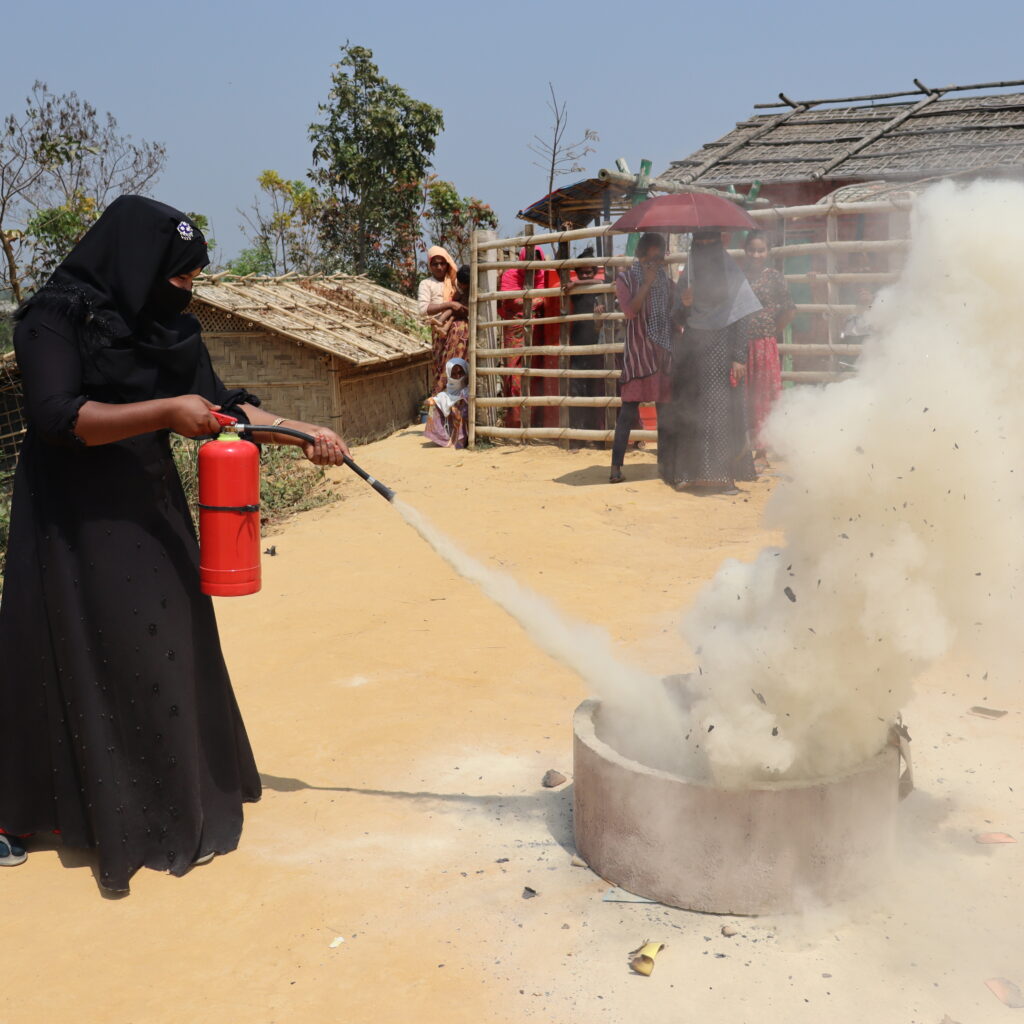
Children often see hazards differently from adults, and when they are actively involved in community-based disaster risk reduction, entire neighbourhoods respond more effectively.
In training sessions, young people practise life-saving skills such as first aid, swimming and evacuation drills. They learn how floods, landslides and earthquakes can impact not only themselves but families, neighbours and the wider community.
In Cox’s Bazar, Bangladesh, Lamia*, 18, lives in one of the many female-led households in the refugee camp. Since 2017, fires, floods and violence have shaped her daily life. Her household is particularly vulnerable to gender-based violence and emergencies, and cultural norms sometimes make women and girls hesitate to seek help from male community members.
Determined to protect herself and others, Lamia trains as a community first responder through ChildFund Australia and EDUCO. She learns emergency drills, first aid and how to coordinate relief, equipping her to save lives and support her community when disaster strikes. “I want to work as a firefighter and serve my community; I want to save people’s lives,” she says.
Through programs like these, children and young people gain the skills, confidence and knowledge to respond quickly during natural disasters. By empowering them, communities become more resilient and better prepared for floods, fires, cyclones and other hazards. Participatory community action plans, aligned with United Nations principles for disaster risk reduction, further equip children and families with the knowledge and skills to respond quickly when natural disasters strike.
How can you help with the response after a natural disaster?
Unfortunately, despite all the advancements in technology, we don’t always know when a hazard or natural disaster may strike. But we do know that the key to survival is preparation and support.
Following a natural disaster in the countries where we work, ChildFund provides emergency assistance in a number of ways. This could include:
- Establishing Child Friendly Spaces that provide children with a safe place to play, learn and receive trauma support after a disaster;
- Setting up temporary learning shelters where children can continue their education when schools have been damaged or destroyed;
- Distributing emergency kits, materials and food rations in the immediate aftermath of a humanitarian emergency; and
- Supporting families to re-establish homes and livelihoods after a disaster.
Help us be on the frontline of an emergency response to support affected communities during times of crisis. Donate monthly to support communities when the next disaster hits.
Frequently Asked questions
When preparing for natural disasters, having the right essentials on hand can make a life-saving difference. Every household and community should consider keeping the following items ready:
- Clean water
Access to safe drinking water is often disrupted in emergencies. Storing clean water helps families stay healthy when supplies are cut off. ChildFund also works with communities to strengthen water and sanitation systems so that children and families can rely on safe water even during crises. - Non-perishable food
Nutritious, long-lasting food like rice, canned goods, and dried fruit provides vital energy when fresh food is unavailable. Through its programs, ChildFund supports families with food security initiatives, ensuring children don’t go hungry when disasters strike. - First aid supplies
Basic first aid kits, including bandages, antiseptic, and essential medicines, help treat injuries and prevent infection until professional care is available. ChildFund also provides health education and resources so communities are better equipped to care for children in emergencies. - Torches and batteries
Power outages are common during natural disasters. Having torches, lanterns, and spare batteries helps families stay safe at night and maintain communication if needed. ChildFund’s disaster preparedness work often includes providing solar-powered lights and emergency kits to vulnerable families.
While household supplies are critical, ChildFund also focuses on community-wide preparedness. This includes:
- Training children and families in evacuation plans and safety procedures.
- Supporting schools to develop emergency response strategies that keep children safe.
- Working with local partners to build resilience and ensure aid can reach communities quickly.
By preparing both at home and at the community level, families can face natural disasters with greater security and resilience – ensuring children are protected and able to recover more quickly.
Communities often serve as first responders – especially within the first 72 hours, before external help arrives. In remote areas, this delay can be even longer. That’s why local, community-based disaster preparedness is essential.
Key response strategies include:
- Creating a Community Action Plan
A clear plan ensures everyone knows their role in a crisis – from protecting children to securing essential resources. ChildFund works with community leaders to co-design these plans, focusing on the needs of children, who are often the most vulnerable in disasters. - Designating safe evacuation zones
Identifying and preparing safe spaces – such as schools or community halls – provides families with secure areas during floods, cyclones or bushfires. ChildFund helps strengthen these safe zones by supporting infrastructure and ensuring they are child-friendly. - Developing communication strategies
Keeping families connected is crucial when disaster disrupts normal communication channels. Communities often establish warning systems (such as sirens or local radio). ChildFund supports early warning systems and educates families and children on how to respond quickly to alerts. - Stockpiling emergency kits
Having supplies such as food, clean water, first aid and sanitation materials ensures communities can sustain themselves in the immediate aftermath. ChildFund also provides emergency kits tailored for children and families to reduce health and safety risks.
ChildFund Australia partners with local organisations to train children, families, and community groups in these response strategies, helping them not only survive but recover more quickly when disaster strikes.
By empowering communities with the right skills, resources and plans, ChildFund helps ensure that even in the most challenging circumstances, children are protected, families stay together, and recovery begins sooner.
The aftermath of natural disasters is often devastating. Physical damage, loss of lives, economic hardship and long-term psychological trauma are just some of the impacts.
In rural areas, the damage to crops and livestock can have ongoing consequences for food security and livelihoods. The emotional toll, especially on children, can change lives forever.
*Names have been changed to protect individuals’ identities.


